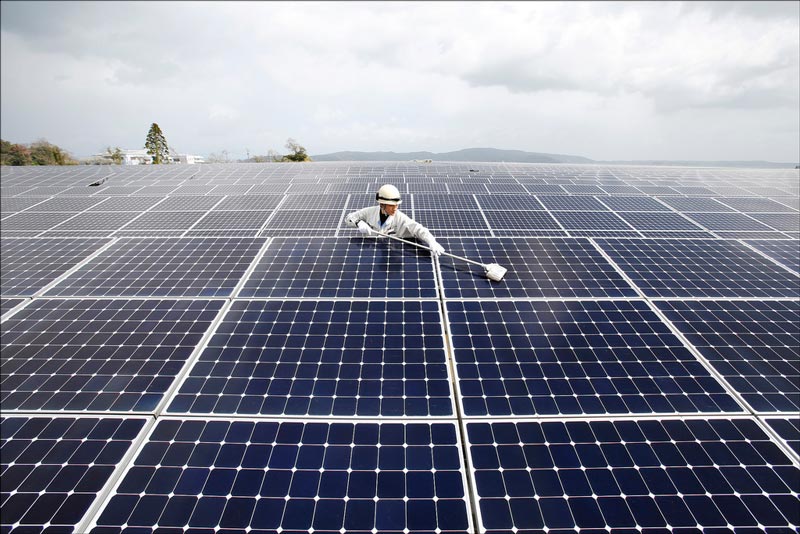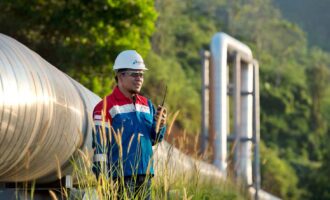
TotalEnergies presents plan for its energy transition
Many countries around the globe have already communicated net-zero targets, including the United States and China — the world’s two largest emitters. Net-zero pledges are no longer viewed as a ground-breaking commitment, rather a mandatory climate credential for any responsible country or company. In May 2020, Total announced its ambition to achieve net-zero emissions by 2050. The French energy giant also unveiled a rebrand to TotalEnergies with a new visual identity, to reflect its transition to a broader energy company.
As with any carbon-neutral promise, the devil is in the details. Several oil companies have faced criticism over their proposed handling of certain emissions. TotalEnergies has committed to achieving net-zero emissions on operated oil and gas facilities (scope 1 and 2 emissions) and all emissions in Europe. However, the French company has stopped short of an outright commitment to the carbon neutrality of energy products used by its customers around the world (scope 3 emissions). Instead, the company has offered an aspirational statement that it will expand its carbon-neutral pledge to other regions when they adopt the same path as Europe. In effect, they will become carbon neutral when they are forced to.
After emerging from 12+ months of uncertainty around oil prices and the global pandemic, TotalEnergies is now turning its attention to the future. On September 28, 2021, Patrick Pouyanné, TotalEnergies SE chairman and CEO, and members of the Executive Committee, presented the 2021 Strategy and Outlook for TotalEnergies in Paris, France. During the presentation, Pouyanné provided details on how TotalEnergies will transition into a sustainable multi-energy company.
A turning point

The issuing of TotalEnergies’ Strategy and Outlook is a turning point for the company, says Pouyanné. He emphasised the need for the company to quickly evolve and seize new energy opportunities, or risk being left behind. As a multi-energy company, TotalEnergies will remain active in oil, natural gas, renewables and electricity, biomass, and hydrogen. Their stated motivation is to be a leader in the energy transition and play a positive role in society and the environment. Though, the French major’s strategy is not currently aligned with the more ambitious goals of the Paris Agreement that limit global warming to below 1.5 degrees Celsius.
A growing minority of investors in Big Oil are becoming increasingly vocal about the need to do more to adapt and combat climate change. Anglo-Dutch multinational energy company Shell, which claims its strategy is aligned with the Paris Agreement, was the first energy company to submit its energy transition strategy to shareholders for an advisory vote. Pouyanné stressed that TotalEnergies’ strategy of becoming a major player in the energy transition received more than 92% support at the last general assembly of shareholders. The Strategy and Outlook presentation outlined greater detail on how TotalEnergies intends to achieve its energy transition while continuing to provide a return for shareholders.
By 2030, TotalEnergies’ worldwide scope 1+2 emissions will decrease by 40%. Despite growth in energy production, absolute scope 3 emissions will be lower than in 2015. The company will reduce its scopes 1+2+3 emissions in Europe by 30%, compared to 2015 levels. By way of comparison, Shell is targeting a 20% reduction in carbon intensity by 2030, and 45% by 2035. Though, Shell’s emissions include scopes 1+2+3, not just the energy produced directly by the company. Chevron Corporation issued an updated climate change resilience report on October 11, 2021, that included a net-zero aspiration. The American multinational energy corporation’s ambitions capture only upstream scope 1 and 2 emissions. A 2028 greenhouse gas intensity target that incorporates scopes 1+2+3 emissions offers a “greater than 5%” reduction.
Pouyanné told meeting attendees that its 105,000 employees are committed to energy that is more affordable, clean, reliable, and accessible to as many people as possible. However, the company did not detail any plans to tie its sustainability targets to the remuneration of employees.
Natural gas is 30% less carbon-intensive than oil
Natural gas is around 30% less carbon-intensive than oil upon combustion and emits 45% less carbon dioxide than coal. Despite acknowledging differing perspectives on the role of this fossil fuel, Pouyanné says natural gas will play a prominent role in TotalEnergies’ transition.
The company expects to grow total energy production by 30% to 2030 while generating fewer emissions. Half of this growth will come from LNG, with the other half from electricity, primarily renewables. Production of LNG will increase by 30% by 2025 and double in the following five years, says Pouyanné. Similarly, natural gas acts as a central pillar in Shell’s energy transition strategy, released on April 15, 2021, accounting for 55% of hydrocarbon production by 2030. TotalEnergies’ aggressive diversification growth strategy contrasts with the more disruptive strategy offered by British multinational bp. bp recently rolled out a 10-year plan which includes a 40% reduction in oil and gas production.
TotalEnergies aims to consolidate its position as a top-three low carbon LNG company, with sales expected to reach 50 million tonnes per year (Mt/y) by 2030. Much of this demand will be driven by Asia. Demand for LNG in China grew 35% from the first half of 2019 to the first half of 2021. Pouyanné also outlined plans to speed up decarbonisation of the LNG chain, reducing the full chain carbon intensity by 20% by the end of the decade. Efforts to reduce methane emissions include the elimination of routine flaring by 2030.
Like all the oil majors, now energy majors, hydrocarbons will continue to generate strong cash flow to fund the transition to new energy. Annual LNG growth of 6% will support a 3% per year increase in TotalEnergies’ upstream production by 2026. The outlook foresees oil production peaking during the decade before declining. Shell has previously indicated its oil production already peaked in 2019 and will decline at 1-2% per year. TotalEnergies confirmed it will continue with targeted oil investments to ensure strong cash flow, estimated at 3 to 5 million barrels per day (Mb/d) of new greenfield conventional projects by the end of 2022 to meet the demand by 2025. Future oil investments will focus on low-cost and low GHG developments, they say. Europe’s “Fit for 55” climate legislation is expected to accelerate lower oil demand. TotalEnergies confirmed it will adapt to lower demand in Europe through changes to capacity and oil product sales.
Number one biogas provider in France

The Strategy and Outlook detailed plans to scale up biogas to become the number one biogas provider in France with more than 10% market share. Leveraging its French expertise, the company will drive European expansion and is targeting 2 terawatt-hours per year (TWh/y) global production of biogas by 2025. An ambition to be a pioneer in the mass production of low-cost carbon-free hydrogen was also highlighted in the presentation. The company says it is on the way to decarbonising all grey hydrogen used in European refineries by 2030. Grey hydrogen is generated from natural gas, or methane, through a process called steam reforming.
TotalEnergies’ diversification strategy will see their sales mix evolve to 30% oil, 50% gas, 15% electricity, and 5% biomass and hydrogen by 2030. Petroleum product sales will decrease by at least 30% over the period 2020-2030.
Investment in renewables and electricity of USD3 billion are forecast, equating to approximately one-quarter of capital spending over the next five years. Pouyanné says the company aims to become one of the world’s top five renewable power producers, with solar and wind capacity set to triple by 2030. Installed capacity will reach 35 gigawatts (GW) by 2025 and 100 GW in 2030. Solar will account for 60% of growth, with 40% from wind energy.
150,000 EV-operated charge points by 2025
Efforts to decarbonise road transportation include the growth of biofuels sales to 7-8 Mt/y by 2025, and 2-3 Mt/y renewal diesel production. TotalEnergies aims to maintain its top-tier position with the shift to electric mobility and has plans for 150,000 EV-operated charge points by 2025, 11,000 of which are located in China. This compares favourably to bp’s goal of more than 70,000 electric vehicle (EV) charge points worldwide by 2030. Shell has previously stated an intention to increase its global network of EV charge points from 60,000+ today to 500,000 in 2025.
The outlook also highlighted plans to develop non-fuel revenues to counter fuel purchasing declines and to grow lubricant value through premium products. To solidify its position in the mobility value chain, TotalEnergies has invested in EV battery manufacturing in Europe, a joint venture with Stellantis and Mercedes Benz, and anticipates over 120 gigawatt hours (GWh) of capacity by 2030. A similar joint venture in China with Tianneng expects to deliver 5 GWh capacity by 2023.








